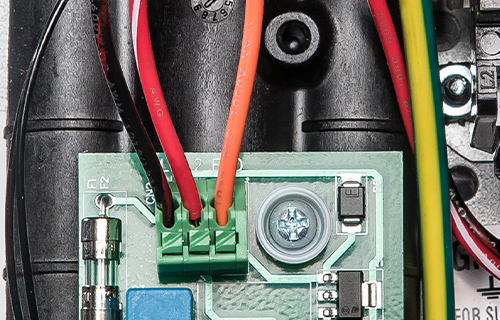
Best practices, lessons learned and insights from the field on how tankless electric water heaters are solving water heating challenges.
There has been a broad spectrum of innovative solutions in the world of tankless electric water heaters within the last decade. From saving space due to their compact size to field adjustable settings and energy-efficiency, this innovative water heating solution has been racking up the accolades. As their popularity grows in the U.S. market, trade professionals are learning about tankless electric and have become better equipped to develop water heating solutions for their customers, no matter the size or scope of the application. We’ll highlight some of the best commercial tankless electric water heating applications and discuss popular installation considerations.
Tankless in Action
Tankless electric water heaters are a good choice for commercial buildings that require hot water on-demand during operational hours. They deliver much higher energy savings than a traditional tank, which heats water 24/7 and experiences regular standby heat losses. Hospitals, one of the biggest energy consumers in the United States, is a great application for tankless electric water heating systems.
Hot water plays a critical role in hospitals, from sanitizing equipment and instruments to powering showers and janitorial requirements. Tankless electric units provide value to these jobs by providing endless, on-demand hot water. Point-of-use tankless electric water heaters are perfectly suited for handwashing in the healthcare industry. They enable healthcare facilities to comply with sanitation codes and meet ADA requirements. Their compact size and multi-directional, wall-mount configurations also allows for easy installation beneath a sink. This allows tankless electric water heaters to be installed at or close to the point-of-use for a faster time to temperature.
Tankless electric water heaters are ideal for seasonal operations like campgrounds, which are often closed from late fall through early spring, when their water heating systems undergo a lengthy dormancy period. While they can easily turn their tank off during this time, it is much easier to winterize a tankless electric water heater as opposed to a 60-gallon tank that needs to be drained and serviced on an annual basis. Schools and churches also fall into this category and can benefit from going tankless. Point-of-use tankless electric water heaters can accommodate their large handwashing requirements without the need for recirculation loops. They operate on-demand and eliminate standby heat losses, typical of tank systems.
Save Space
Tankless electric water heaters are the ideal solution for buildings with physical footprint limitations due to their compact design. The National Institute of Building Sciences recommends upgrading plumbing technology to address inefficiencies in commercial spaces1. Going tankless electric is the most space-effective option when it comes to implementing a water heating system. Boilers and tank-style water heaters store water, so they have a larger physical footprint than tankless electric water heaters, which do not store water and can be wall mounted or arranged in self-supporting racks.
These space savings benefit retrofit projects and new construction. Businesses want to maximize space for key services or generating revenue, making tankless electric water heaters an ideal choice for their water heating needs. Going tankless ensures facility managers are never blind-sided by the task of installing a heater that’s too large for a facility, and the costly remodels to account for their extra size. Furthermore, the larger the facility, the more water must be heated to power bathrooms, sinks and other applications throughout the building. As additional expansion plans emerge, going tankless offers a cost-effective alternative to finding a central heating strategy powerful enough to deliver hot water across multiple buildings. Moreover, installing complicated recirculation loops is costly and expensive to run.
Tankless electric water heaters can be installed at or close to the point-of-use, forgoing the large cylindrical basin where Legionella can grow, but also reduces the piping needed to deliver water to the desired fixtures. Furthermore, tankless electric water heaters can be digitally set to 158 degrees fahrenheit and higher, the temperature needed to kill legionnaire bacteria on impact. Oftentimes, properties will run their tankless electric water heaters at this temperature to purge bacteria on a regular basis.
Installation Considerations
When specifying a tankless electric water heater the number one priority is accurate sizing. A 40-gallon tank will perform the same in New York, as it will in Florida. This is not the case with tankless electric. Tankless electric water heaters must be properly sized to the project specifications (gallons-per-minute required) and geographic location (inlet water temperature), while taking into consideration the power required for optimal performance. Installing a tankless electric water heating system requires more electrical work than a tank system, and is rarely, if ever, a simple swap out. Thankfully, power availability is rarely an issue in commercial applications. On the upside, tankless electric water heaters require a substantially smaller crew and less labor to install. Installing them is a one-man job, whereas installing a 40-80 gallon tank requires a 2-3-man crew. Installing large, tank systems becomes even more complicated when a building is under construction or if there is not a clear path to the installation site.
However, once installation is complete and the TEWH is operational, businesses can expect a smooth run for more than 20 years. The operational life of a traditional tank heater is, at best, 10-15 years2. Tankless electric water heaters also require less maintenance, aside from an annual descaling.
Tankless electric water heaters offer commercial properties customized hot water solutions for enhanced energy-efficiency and help maximize valuable floor space, thanks to their compact design. We forsee their growth in popularity and viability, especially with the increase in green and sustainable building initiatives.
| Eric Jurczyszak is New Product Engineering Manager of Eemax, A Rheem Company. He has been designing tankless electric water heaters with Eemax for 9 years with 5 patents granted in the field. He also serves on committees with ASSE and AHRI. |
1 “Water Conservation,” Source: Whole Building Design Guide, 2016: https://www.wbdg.org/resources/water-conservation
2 “Tankless or Demand-Type Water Heaters,” Source: U.S. Department of Energy: https://www.energy.gov/energysaver/heat-and-cool/water-heating/tankless-or-demand-type-water-heaters

